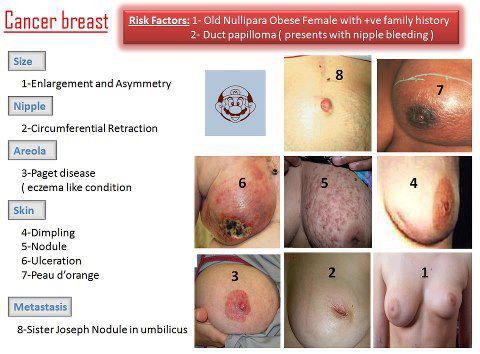The 5 Oddest Ways Technology is Aiding Peculiar Industries
1. DNA Testing and Infidelity
For couples all over the world that may be having relationship troubles, the possibility of infidelity by their significant other is a potentially serious problem. To combat this nasty relationship breaker, all sorts of solutions commonly get proposed, ranging from counseling to private investigators who spy on travelling husbands or wives.
However, at least one company, called Infidelity Testing, is offering a pretty odd way of finding out if your significant other is cheating on you, by using the highly precise science of DNA testing. Simply send in your partner's dirty underwear to their laboratories, and wait for them to do a careful multi-point scan of the fabric for hard to remove traces of third party genetic material that would have no easy way of finding its way to such an intimate place.
2. Cyborg....…Rats and Rescue Services
We've all heard of rescue dogs using their superman noses to detect survivors under the rubble of bomb or earthquake ruined buildings and other places. We're even getting pretty used to naval rescue services training dolphins or sea lions in the fine art of detecting underwater weapons and lost divers with the aid of specialized equipment mounted to their backs. However, one even more radically surprising new trend that's being used by scientists at DARPA and the University of Florida involves using rats as detection animals for disaster scenarios.
Since the flexible little rodents naturally spend their time digging and burrowing through tight space, experimental trials have fitted them with little backpacks that transmit olfactory signals to human supervisors, telling them when the animal has discovered a trapped survivor buried under rubble.
3. UltraSonic Waves that Repel Birds
Many people, from municipal officials to private homeowners and farmers, have all had serious problems with birds on their infrastructure sometimes even very serious problems. From covering public parks in white feces to destroying crops and stealing food, large packs of birds like seagulls, crows and pigeons can become a serious bloody nuisance that can apparently be downright hard to get rid of without the temptation to daily use of flamethrowers.
Unless of course you get creative and think outside the box about dealing with warms of these flying avian rats of the sky. This is where companies like www.Bird-x.com come into the picture. Their interesting technology uses repeating high powered blasts of sonic or even ultrasonic sound waves to permanently scare birds off any public or private place where the machinery that causes these sound waves is installed. The sonic repellers create human audible sounds like predator bird cries and other scary noises to clear an area, while the ultrasonic version of the repellers is designed for spaces with human presence and thus relies on sound that we can't hear but which badly annoys destructive avians.
4. Aluminum as Bullet Proof Armor
When most of us think of Aluminum, we just associate it with flimsy bike frames, flimsy car frames and maybe decorative metal features in buildings. The keyword here is flimsy, and the last thing we'd ever associate with this soft, light metal is hardcore vehicle ballistic armor that's designed to withstand direct hits from toys like a 50 caliber machine gun.
But, believe it or not, this is exactly what aluminum can be used for….. a bullet stopping vehicle window glass. If this seems crazy, the idea that a soft completely opaque metal can suddenly double as a transparent, ultra hard ballistic window replacement in armored cars, then you need to understand that aluminum, when mixed with nitrogen and oxygen into a powder, can then be superheated and super compressed to create a clear, smooth glass-like substance that's several times stronger than even the best ballistic glass or plastic mix.
5. NASA Nano Tech Keeps the Hairstyling Industry Sanitary
The scientists at NASA have had to get extraordinarily creative in making up substance related technologies that keep their astronauts safe and hygienic in orbital space while not causing zero G related problems. One such issue involved keeping surfaces clean without using liquid disinfectants, which would simply form into floating droplets and drift all over the place. Thus, the engineers at NASA developed a substance that was filled extremely small microscopic silver particles which could be applied to surfaces without drifting away; silver, as many medical professionals know, happens to be antimicrobial by nature.
Before long, a hair care company owner by the name of Farouk Shami had heard of this development at a nanotechnology conference and soon started applying it to the hair styling industry by coating styling tools with a self-disinfecting layer of silver nano particles.
For couples all over the world that may be having relationship troubles, the possibility of infidelity by their significant other is a potentially serious problem. To combat this nasty relationship breaker, all sorts of solutions commonly get proposed, ranging from counseling to private investigators who spy on travelling husbands or wives.
However, at least one company, called Infidelity Testing, is offering a pretty odd way of finding out if your significant other is cheating on you, by using the highly precise science of DNA testing. Simply send in your partner's dirty underwear to their laboratories, and wait for them to do a careful multi-point scan of the fabric for hard to remove traces of third party genetic material that would have no easy way of finding its way to such an intimate place.
2. Cyborg....…Rats and Rescue Services
We've all heard of rescue dogs using their superman noses to detect survivors under the rubble of bomb or earthquake ruined buildings and other places. We're even getting pretty used to naval rescue services training dolphins or sea lions in the fine art of detecting underwater weapons and lost divers with the aid of specialized equipment mounted to their backs. However, one even more radically surprising new trend that's being used by scientists at DARPA and the University of Florida involves using rats as detection animals for disaster scenarios.
Since the flexible little rodents naturally spend their time digging and burrowing through tight space, experimental trials have fitted them with little backpacks that transmit olfactory signals to human supervisors, telling them when the animal has discovered a trapped survivor buried under rubble.
3. UltraSonic Waves that Repel Birds
Many people, from municipal officials to private homeowners and farmers, have all had serious problems with birds on their infrastructure sometimes even very serious problems. From covering public parks in white feces to destroying crops and stealing food, large packs of birds like seagulls, crows and pigeons can become a serious bloody nuisance that can apparently be downright hard to get rid of without the temptation to daily use of flamethrowers.
Unless of course you get creative and think outside the box about dealing with warms of these flying avian rats of the sky. This is where companies like www.Bird-x.com come into the picture. Their interesting technology uses repeating high powered blasts of sonic or even ultrasonic sound waves to permanently scare birds off any public or private place where the machinery that causes these sound waves is installed. The sonic repellers create human audible sounds like predator bird cries and other scary noises to clear an area, while the ultrasonic version of the repellers is designed for spaces with human presence and thus relies on sound that we can't hear but which badly annoys destructive avians.
4. Aluminum as Bullet Proof Armor
When most of us think of Aluminum, we just associate it with flimsy bike frames, flimsy car frames and maybe decorative metal features in buildings. The keyword here is flimsy, and the last thing we'd ever associate with this soft, light metal is hardcore vehicle ballistic armor that's designed to withstand direct hits from toys like a 50 caliber machine gun.
But, believe it or not, this is exactly what aluminum can be used for….. a bullet stopping vehicle window glass. If this seems crazy, the idea that a soft completely opaque metal can suddenly double as a transparent, ultra hard ballistic window replacement in armored cars, then you need to understand that aluminum, when mixed with nitrogen and oxygen into a powder, can then be superheated and super compressed to create a clear, smooth glass-like substance that's several times stronger than even the best ballistic glass or plastic mix.
5. NASA Nano Tech Keeps the Hairstyling Industry Sanitary
The scientists at NASA have had to get extraordinarily creative in making up substance related technologies that keep their astronauts safe and hygienic in orbital space while not causing zero G related problems. One such issue involved keeping surfaces clean without using liquid disinfectants, which would simply form into floating droplets and drift all over the place. Thus, the engineers at NASA developed a substance that was filled extremely small microscopic silver particles which could be applied to surfaces without drifting away; silver, as many medical professionals know, happens to be antimicrobial by nature.
Before long, a hair care company owner by the name of Farouk Shami had heard of this development at a nanotechnology conference and soon started applying it to the hair styling industry by coating styling tools with a self-disinfecting layer of silver nano particles.




Comments
Post a Comment